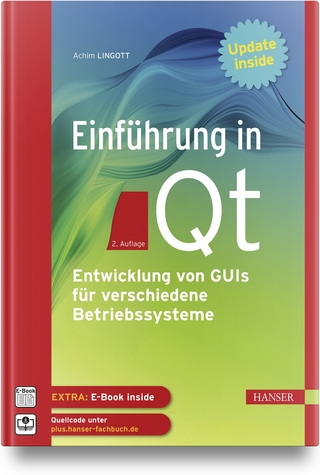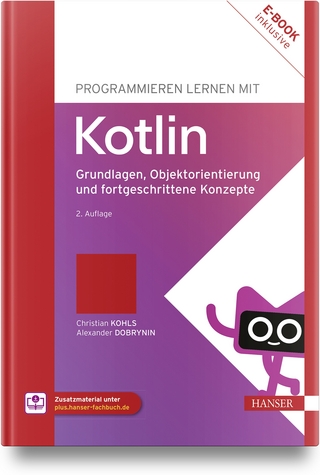
Object Oriented Software Technologies in Telecommunications
John Wiley & Sons Inc (Verlag)
978-0-471-62379-3 (ISBN)
Object-oriented (OO) technology is an integral part of computer communications and multimedia service provisioning. Covering all areas related to OO programming in telecommunications applications, this book offers both theoretical and practical aspects of OO technology. Readers will find comprehensive coverage is included on broadband, intelligent networks, and machine independent code.
Iakovos Venieris is the editor of Object Oriented Software Technologies in Telecommunications: From Theory to Practice, published by Wiley. Fabrizio Zizza is the editor of Object Oriented Software Technologies in Telecommunications: From Theory to Practice, published by Wiley.
Preface.
Contributors.
Acronyms and Abbreviations.
PART I: The Need for Advanced Software Technologies in Telecommunication Networks.
Chapter 1: Networks and Telecommunications Software Evolution (G. Mamais, A. Papadakis, M. Perdikeas, I. Venieris.)
1.1 Introduction.
1.2 A Unifying Perspective of Networking Technologies.
1.3 Telecommunication Networks Technologies.
1.4 Internet Software Technologies.
References.
Chapter 2: Future Trends in Telecommunications Software Technologies (F. Chatzipapadopoulos, M. Perdikeas, I. Venieris).
2.1 Software in Telecommunication Environments.
2.2 The Role of Services in Telecommunications.
2.3 The Role of Services in Computer Networks.
2.4 Relative Pros and Cons of the Telecommunication Networks Approach.
2.5 Historical Practices that Underpinned Differentiation.
2.6 An Academic Perspective.
2.7 Computer Networks Revised.
2.8 Telecommunications Revised.
2.9 Future Trends and Enabling Technologies.
References.
PART II: Enabling Software Technologies.
Chapter 3: Object Oriented Design Methodologies (G. Mamais, M. Perdikeas, I. Venieris).
3.1 Introduction.
3.2 General Principles of Object Orientation.
3.3 Object Oriented Methodologies.
3.4 Object Oriented Approaches in Telecommunications Software.
3.5 Network Management and Service Engineering.
References.
Chapter 4: Distributed Object Technology (S. Choy, G. De Zen, O. Pyrovolakis).
4.1 General Principles.
4.2 Distributed Object Architectures.
4.3 Distributed Object Technology in Telecommunications.
References.
Chapter 5: Machine Independent Code (F. Chatzipapadopoulos, M. Perdikeas, I. Venieris).
5.1 Introduction.
5.2 Java.
5.3 Scripting Languages.
5.4 The Standard for Coding Multimedia Presentations -
MHEG.
References.
Chapter 6: Agents (T. Magedanz, M. Perdikeas, I. Venieris).
6.1 General Principles of Software Agents.
6.2 Agent Standards.
6.3 Mobile Agent Platforms.
6.4 Mobile Agents in Telecommunications.
References.
PART III: Case Study: Distributed Intelligent Broadband Network.
Chapter 7: Evolution towards a Distributed Intelligent Broadband Network (T. Magedanz, I. Venieris, F. Zizza).
7.1 Basic Intelligent Network Principles.
7.2 Intelligent Broadband Network.
7.3 Distributed Intelligent Broadband Network.
7.4 Need for Interworking with Conventional IN/B-IN.
7.5 Overview of Part III.
References.
Chapter 8: Architecture of the Distributed Intelligent Broadband Network (M. Breugst, L. Faglia, O. Pyrovolakis).
8.1 Introducing Advanced Software Technologies in the Distributed Intelligent Broadband Network.
8.2 The Distributed Intelligent Broadband Network Reference Architecture.
8.3 Extending IN Design Methodology for the DIBN.
8.4 The Physical Elements.
References.
Chapter 9: Deployment of DOT/MAT Technology into the Distributed Intelligent Broadband Network (F. Chatzipapadopoulos, S. Choy, I. Venieris, F. Zizza).
9.1 What CORBA Offers to the DIBN Architecture.
9.2 The Communication Backbone.
9.3 Exploiting MAT Migration Facilities in the DIBN.
9.4 Service Creation Methodology and Framework.
9.5 Service Management Mechanisms and Procedures.
9.6 Designing and Implementing IN Network Elements within the DOT/MAT Environment.
References.
Chapter 10: Service Specification in the Distributed Intelligent Network (M. Breugst, G. Marino, M. Perdikeas).
10.1 Service Description Methodology: UML.
10.2 IMR Service.
10.3 BVT Service with Mobility Management Support.
References.
Index.
| Erscheint lt. Verlag | 18.4.2000 |
|---|---|
| Verlagsort | New York |
| Sprache | englisch |
| Maße | 173 x 251 mm |
| Gewicht | 680 g |
| Einbandart | gebunden |
| Themenwelt | Informatik ► Software Entwicklung ► Objektorientierung |
| Technik ► Elektrotechnik / Energietechnik | |
| Technik ► Nachrichtentechnik | |
| ISBN-10 | 0-471-62379-2 / 0471623792 |
| ISBN-13 | 978-0-471-62379-3 / 9780471623793 |
| Zustand | Neuware |
| Haben Sie eine Frage zum Produkt? |
aus dem Bereich


